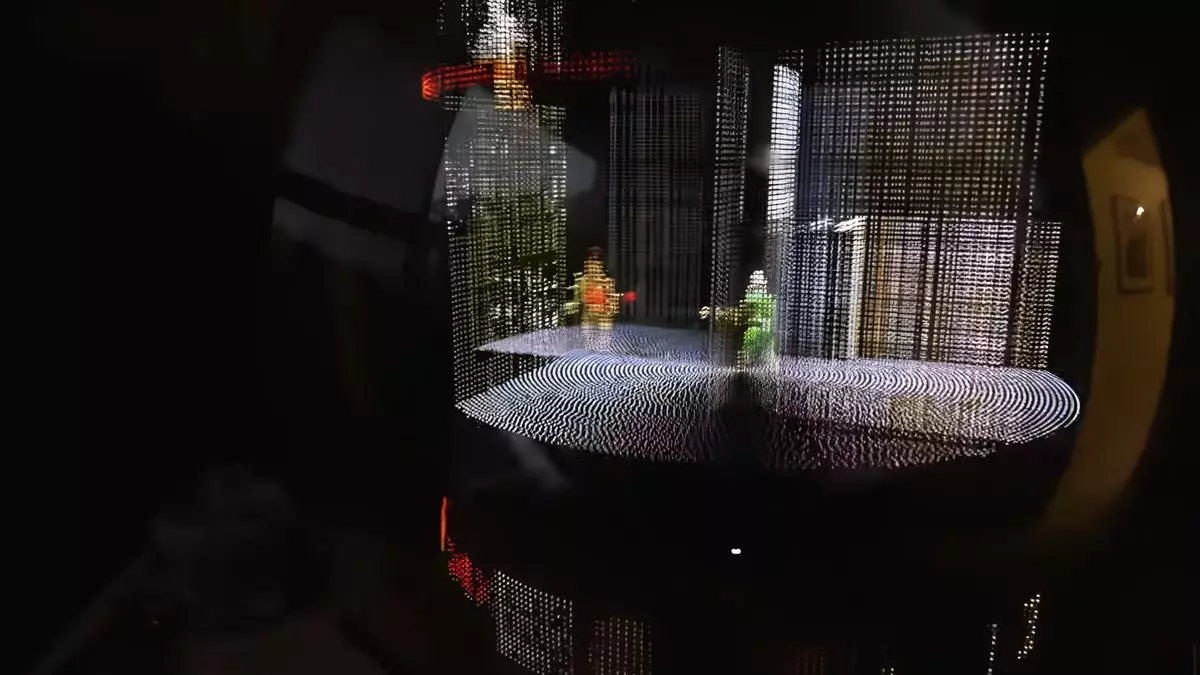The original *Doom*, launched in 1993, is a cornerstone of gaming history that transcends its role as a mere video game. As one of the pioneering titles in the first-person shooter genre, it established conventions that continue to shape the industry. Its widespread acclaim over the past thirty years highlights its significance, making it a favorite for nostalgic gamers and a reference point for technologists exploring innovative projects. Today, as we stand at the intersection of retro gaming nostalgia and cutting-edge technology, *Doom* is once again at the forefront—not in its original format but as a testbed for next-generation displays.
One of the most intriguing modern experiments is the use of volumetric displays. These devices present an exciting avenue for how games could be experienced in the future. By environmentalizing the game’s graphics, volumetric displays promise a more immersive experience that traditional monitors can’t provide. This leap from 2D pixels to a three-dimensionality alludes to the hope that we may one day see gaming transition into truly holographic experiences.
Understanding Volumetric Displays
Volumetric displays function primarily by employing arrays or strips of LEDs that rotate rapidly to project images into a three-dimensional space. This technique allows for visuals that occupy physical volume rather than being confined to a flat screen. For those familiar with the concept of holography from sci-fi films—think the visual displays in *Star Wars*—the allure becomes evident. When players look at these displays, they are not merely viewing an image; they engage with a dynamic object that occupies space.
The YouTuber known as Ancient has been at the forefront of this exploration, attempting to run *Doom* on various forms of unconventional hardware. Their determination to adapt legacy games to new technologies speaks volumes about both the past’s lasting influence and the potential of future innovations.
Although the prospects of volumetric displays are exciting, significant limitations hinder their current capabilities. One immediate challenge is the relationship between the size of the display and the game’s draw distance. A smaller display results in a compromised view distance, akin to the gaming experiences of early consoles like the PlayStation. Therefore, players may find themselves restricted in the vast virtual worlds that games like *Doom* aim to depict.
Additionally, resolution presents its own complexity. Translating the detailed pixel-based graphics of a game into volumetric displays means dealing with the concept of “voxels,” representative cubes in a 3D space. Increasing the density of these voxels through additional LEDs makes for an enriched visual experience but also introduces more complexity in programming and circuit design. This technical barrier may deter many developers who seek to replicate such experiences.
Furthermore, there’s the significant auditory distraction due to the operational mechanics of volumetric displays. The rotating motors and air movement can create a cacophony that detracts from the gaming experience, posing further questions about how to design these systems for optimal playability.
Despite these limitations, Ancient’s projects merit commendation due to their innovative spirit and self-sufficient nature. This DIY approach in the tech community fosters creativity, pushing each unit towards improved functionality. For those interested in more polished outputs, commercial alternatives like the Voxon VX2 exist but come with a hefty price tag of $6,800—making it less accessible to the average gamer.
While we are not ready to relinquish our traditional gaming setups for a spinning, three-dimensional experience, we can glean valuable insights into the future of gaming through these explorations. Volumetric displays signify a path to an engaging and immersive way to play video games, promising a future where virtual worlds can be deeply felt in a physical sense.
As game design continues to evolve, so too will the platforms we use to engage with them. The quest for a volumetric display large enough to capture the grand scale of games like *Doom* may soon turn from a dream into a reality. With continued innovation and creativity, we are potentially on the brink of ushering in a new era in the gaming industry—one that blends nostalgia with groundbreaking technology. Time indeed to rip and tear—but this time, in three dimensions!

